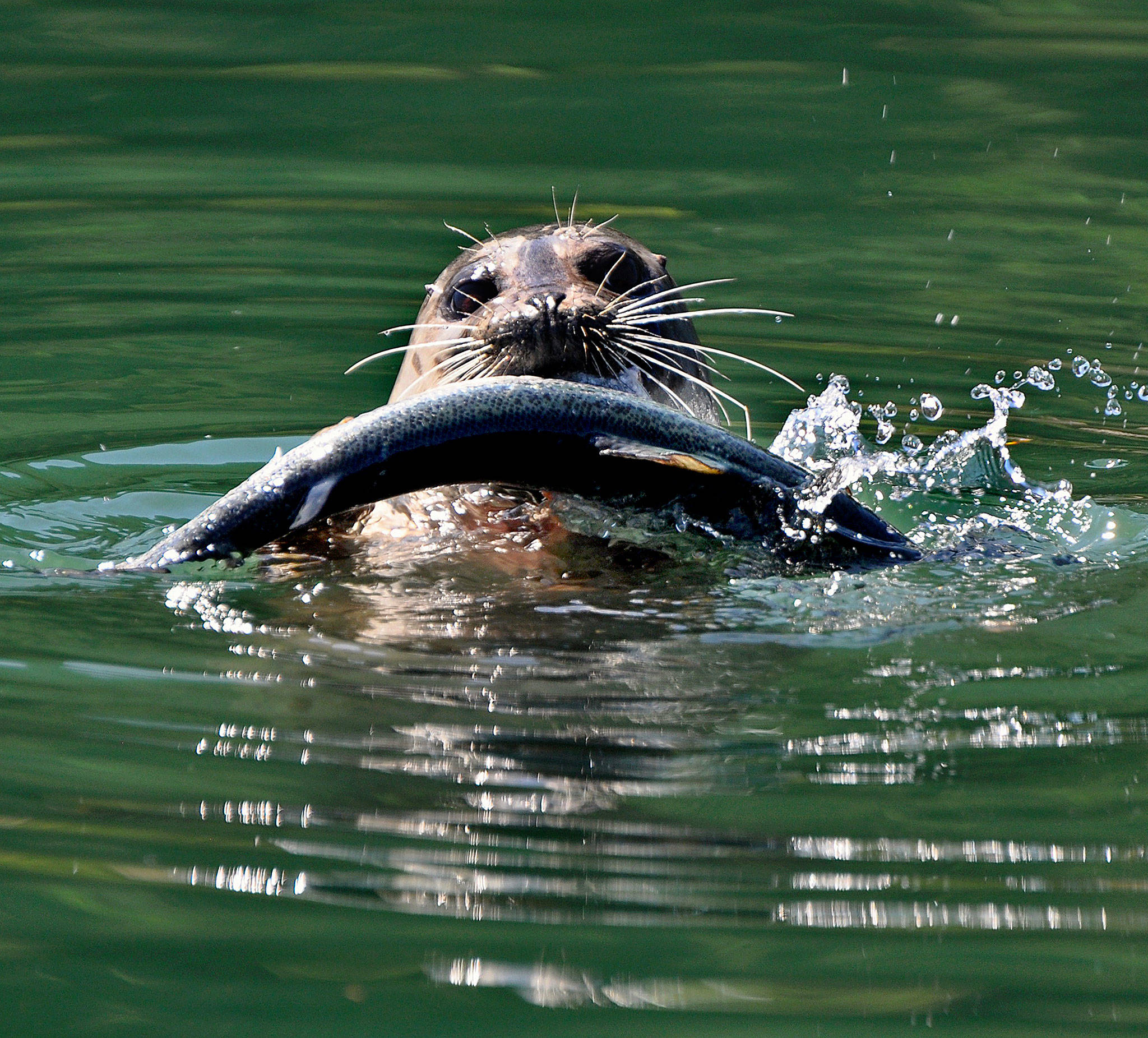AFTER REACHING OUT to those in the know, I feel better about the net pen collapse that sent a portion of 305,000 farmed Atlantic salmon into the water near Cypress Island in the San Juans.
Many of those fish have left the area, with catches recorded as far west as Neah Bay and as far south as West Seattle with some reports saying fish were all the way to Olympia.
Atlantics have been seen on the Nooksack, Samish, Skagit and Snohomish rivers, but none have been spotted on the Dungeness River, according to Jamestown S’Klallam Tribe Natural Resources Director Scott Chitwood.
“The short answer is no, we haven’t seen any yet,” he said. “There have been chinook surveys conducted on the Dungeness River since early August, and since the pen outbreak we have seen zero Atlantics.”
Chitwood also said a state Department of Fish and Wildlife group assessing chum return to Jimmycomelately Creek, headed by biologist Cheri Scalf, has seen no sign of the farmed fish.
“They also manage returns to Salmon Creek in Discovery Bay and have had nothing to report there.”
Chitwood’s main concern is the competitive threat these uniformly 10-to 11-pound fish present to Pacific salmon stocks and other fish species on the salt water and in rivers and streams.
“The biggest problem we see is predation on juvenile species of all kinds of salmon,” Chitwood said. “We don’t need any predation on any of our wild population of salmon or rockfish. That competition for available food would be the main issue. We have some issues already with getting juvenile salmon out from Puget Sound to sea without overcoming high-level predation and questionable environmental conditions.”
Reproduction unlikely
Chitwood said he was not too concerned with potential impacts from the Atlantics spawning and breeding in area rivers.
“There’s not too much information available to say whether or not they can reproduce [in the wild],” Chitwood said.
“There will be observations of gametes in the fish, whether male or female, but these are not well-developed.”
Chitwood remembered a stretch in the late 1990s that saw Atlantics escape from pens in Puget Sound in three consecutive years.
“I remember one over by Bainbridge Island in 1998 or 1999 where over 100,000 were released,” Chitwood said.
“Same company, same operation, same kind of net pens. I dont think there were any reports of successful reproduction from those escapes, and it’s not likely we are going to see reproductive success this time.”
Fed pellets for their entire lives, the fish may not make the fittest of survivors in the natural world.
“One of our geneticists put it pretty well,” Chitwood said.
“The Atlantics are like putting a dairy cow on the Serengeti [in Africa]. They may not last very long.”
Quilcene’s Ward Norden, a former fisheries biologist and owner of Snapper Tackle Company, doesn’t think the escape is the environmental disaster many, such as the Wild Fish Conservancy, are making it up to be.
“A couple decades ago 100,000 Atlantics got loose from pens and the same anti-net pen hysteria was launched by the commercial fishers and their surrogates,” Norden said.
“After a few months some were seen in the Skagit and Skykomish rivers, and a few were caught in the salt, but 95 percent or more just disappeared into the ether. I even bought in and had products made to catch them.”
Norden said he thinks the escape is a non-issue, and is being built up to enhance the bottom line of commercial fishermen.
“The commercial fishers want the net pens gone because they keep prices down [for Pacific salmon species],” Norden said.
“As far as net pens go, I support them as long as they are placed in areas with enough current to move water around. They are actually good for wild salmon stocks (if we had them) since they could replace the need for the non-selective commercial fisheries that are the real threat, which Pat Neal calls ‘nylon pollution.’
“One question to ponder — would the taxpayers need to spend $120 million or more per biennium on salmon hatcheries to subsidize net fisheries if there were enough net pens?”
In a CBC article, Jeremy Dunn, executive director of the B.C. Salmon Farmers Association, pointed to an experiment in the mid-20th century where the Department of Fisheries and Oceans introduced hundreds of thousands of Atlantics into British Columbia’s waters in hopes they’d colonize and be available for sport fishers.
“They were out-competed by Pacific salmon for food and weren’t able to take in this environment,” Dunn said.
And that would be the case again today, he said, at least in part because farmed salmon are fed food pellets, so once in the wild, “they’re going to have a hard time eating if the pellets aren’t readily available.”
A study from the University of Melbourne in Australia found many farmed salmon are partially deaf, a possible side-effect of their accelerated growth.
That study notes that fish in the wild use their hearing to find prey and avoid predators and as a way to navigate to and from breeding grounds. Without it, their chances for survival are poor.
________
Sports reporter/columnist Michael Carman can be contacted at 360-417-3525 or mcarman@peninsuladailynews.com.

